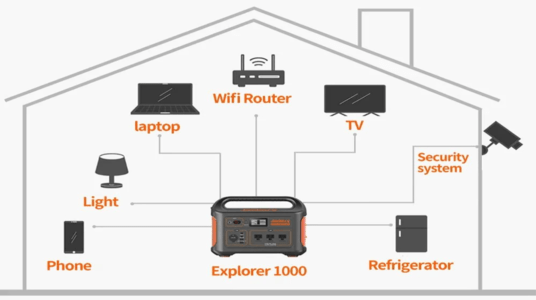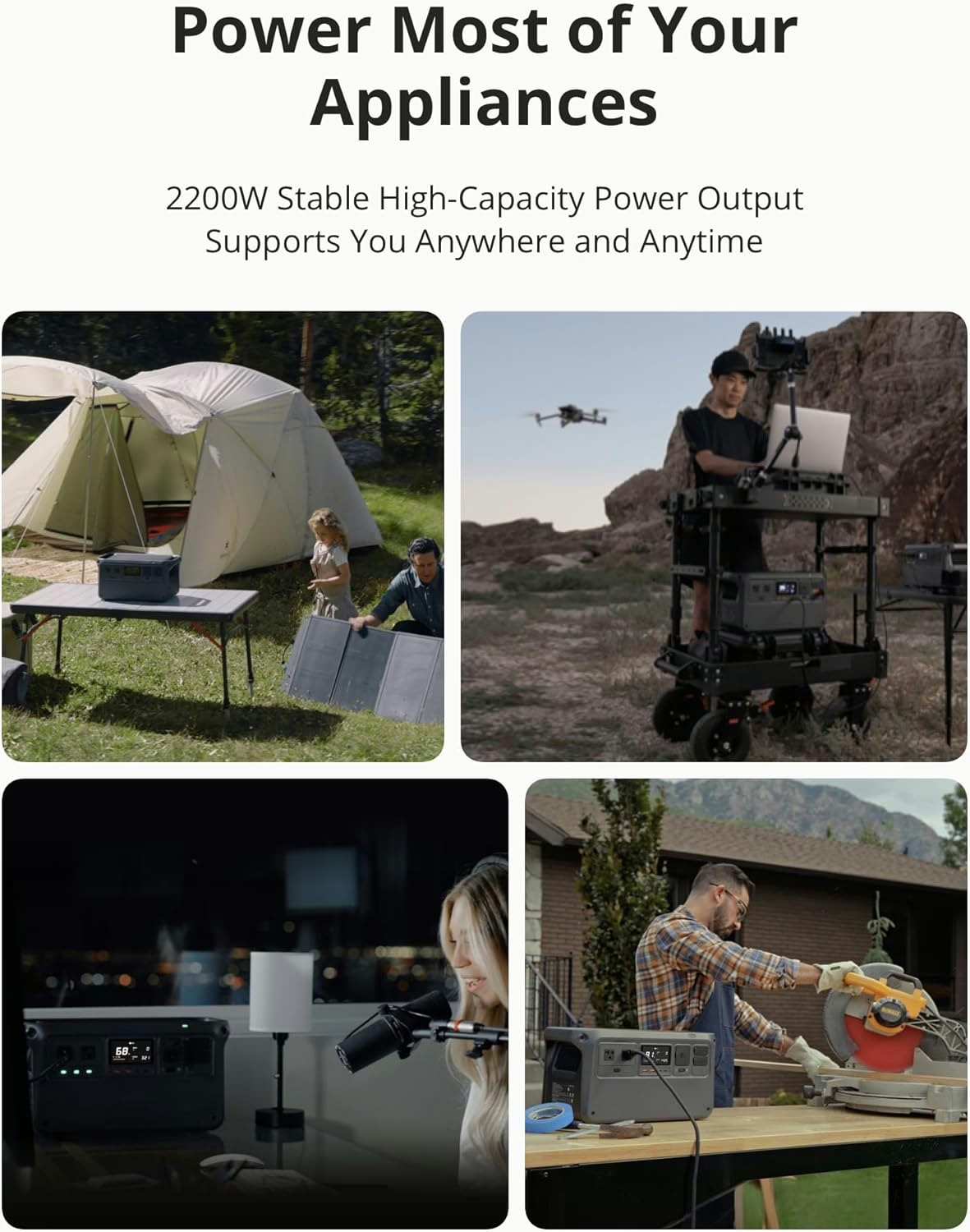The question at hand – “how long will a portable power station run a TV?” – requires understanding a few basic principles of electricity and energy usage. The answer is not a simple one-size-fits-all, as it relies on several factors, including the power capacity of the portable power station and the power consumption rate of the TV. In the following sections, we’ll delve into these factors, provide an illustrative example of the calculation involved, and offer practical advice on maximizing the runtime of a TV using a portable power station.
Factors Affecting the Runtime
Capacity of the Power Station
The capacity of a power station, typically expressed in watt-hours (Wh), is the total amount of energy it can store. A larger capacity means that the power station can supply power for a longer period. For instance, a 500Wh power station can theoretically supply 500 watts for one hour or 50 watts for 10 hours.However, the actual runtime will depend on the amount of power drawn by the connected devices, in this case, the TV.
Power Consumption of the TV
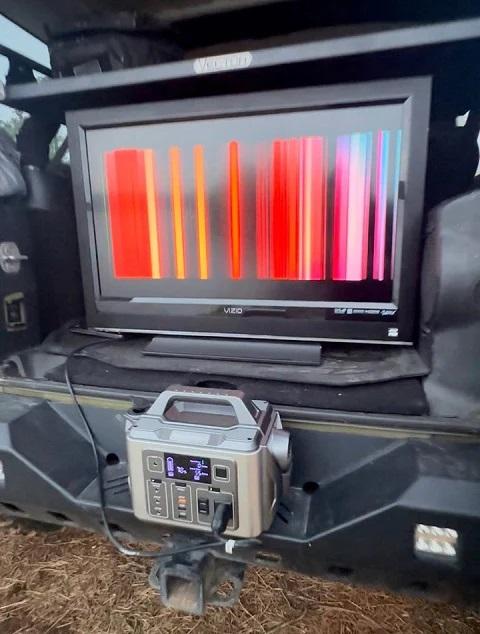
TVs vary widely in their power consumption, typically measured in watts (W). Factors such as screen size, display technology (e.g., LED, OLED, QLED), and usage settings (e.g., brightness, volume) influence power draw. For example:
- A 32-inch LED TV might consume 30–50W.
- A 55-inch 4K OLED TV could use 100–150W or more.
- Older plasma or CRT TVs often consume significantly more power than modern models.
To determine your TV’s power consumption, check the manufacturer’s specifications (usually listed on the TV or in the manual) or use a wattage meter for precise measurements.
Efficiency of the Power Station
Portable power stations are not 100% efficient due to energy losses from heat, internal electronics, and inverter operation. Most models have an efficiency rating of 85–90%, meaning only 85–90% of the stored energy is usable. For example, a 1000Wh power station with 90% efficiency provides 900Wh of usable energy. Some high-end models may achieve efficiencies closer to 95%, but this varies by brand and model.
Basic Calculation and Assumptions
Explanation of How to Calculate Runtime
The basic formula to estimate the runtime is to divide the capacity of the power station by the power consumption of the TV. However, to account for the efficiency of the power station, you need to consider only the usable capacity (total capacity x efficiency rating). For example, if a power station has a capacity of 500Wh and an efficiency of 90%, the usable capacity is 450Wh. If the TV consumes 50W, the estimated runtime would be 450Wh / 50W = 9 hours.
Discussion of Assumptions Used in the Calculation
This calculation is a rough estimate and assumes that the TV is the only device drawing power from the station and that the TV’s power consumption is constant, which may not be the case if the brightness or volume changes. It also assumes the power station is fully charged and that its efficiency remains constant throughout discharge, which may not always be true, especially near the end of the battery’s life.
Understanding these factors and the assumptions involved in the calculation can give you a reasonable estimate of how long a portable power station can run a TV. Real-world conditions, such as temperature, battery age, or simultaneous use of other devices, may reduce the actual runtime. For critical applications, it’s wise to plan for a 10–20% margin of error.
Real-world Examples
To illustrate, consider the following scenarios:
- Basic Setup: A 1000Wh power station with 90% efficiency (900Wh usable) powers a 100W 55-inch LED TV. Runtime = 900Wh ÷ 100W = 9 hours.
- Energy-Efficient Setup: The same 1000Wh power station powers a 50W 32-inch LED TV. Runtime = 900Wh ÷ 50W = 18 hours.
- High-Power Setup: A 500Wh power station with 85% efficiency (425Wh usable) powers a 150W 65-inch QLED TV. Runtime = 425Wh ÷ 150W = 2.83 hours (approximately 2 hours and 50 minutes).

These examples highlight how TV size and power station capacity directly impact runtime. For precise planning, always verify your TV’s wattage and the power station’s specifications.
Ways to Maximize Runtime
Maximizing the runtime of your portable power station ensures you get the most out of your investment, especially during camping, power outages, or remote work. Here are practical strategies:
Efficient Use of Power
- Adjust TV Settings: Lower brightness, disable motion smoothing, and reduce volume to minimize power draw. For example, reducing brightness from 100% to 50% can cut power consumption by 10–20% on many TVs.
- Turn Off Unused Features: Disable Wi-Fi, Bluetooth, or smart features when not needed, as these can consume 5–15W even in standby mode.
- Use Sleep or Standby Mode: If pausing viewing, put the TV in a low-power standby mode rather than leaving it fully on.
Using Energy-Efficient TVs
- Choose LED or OLED: Modern LED and OLED TVs are far more efficient than older LCD, plasma, or CRT models. For example, a 55-inch LED TV may use 80W, while a similar-sized plasma TV could use 200W.
- Opt for Smaller Screens: A 32-inch TV typically consumes half the power of a 55-inch model, making it ideal for portable power setups.
- Check Energy Ratings: Look for TVs with high energy efficiency ratings (e.g., Energy Star certification) to reduce power consumption.
Proper Maintenance of the Power Station
- Regular Charging Cycles: Charge and discharge the power station every 3–6 months to maintain battery health, especially for lithium-ion batteries.
- Avoid Extreme Temperatures: Store and operate the power station between 32°F and 104°F (0°C to 40°C) to prevent efficiency losses.
- Prevent Overloading: Avoid connecting devices that exceed the power station’s rated output to prevent damage and maintain efficiency.
Advanced Power Management
- Use a Solar Panel: Pairing your power station with a compatible solar panel allows you to recharge during the day, effectively extending runtime for long-term use (e.g., camping or off-grid living).
- Prioritize AC vs. DC Output: If your TV supports DC input (common in smaller models), use it instead of AC to reduce inverter losses, which can save 5–10% of energy.
- Monitor Power Usage: Some power stations have built-in displays or apps to track real-time power consumption, helping you adjust settings to optimize runtime.
Advanced Considerations for Choosing a Power Station
When selecting a portable power station for running a TV, consider the following features to ensure compatibility and performance:
Inverter Type and Quality
- Pure Sine Wave vs. Modified Sine Wave: TVs, especially modern smart TVs, perform best with pure sine wave inverters, which provide stable power similar to household outlets. Modified sine wave inverters may cause flickering or damage sensitive electronics.
- Inverter Capacity: Ensure the power station’s inverter can handle the TV’s peak power draw (e.g., during startup), which may be higher than its rated wattage.
Battery Chemistry

- Lithium-Ion vs. LiFePO4: Most power stations use lithium-ion batteries for their high energy density, but LiFePO4 batteries offer longer lifespans (up to 2000+ charge cycles) and better performance in extreme temperatures, making them ideal for frequent use.
- Battery Management Systems (BMS): A robust BMS protects against overcharging, overheating, and short circuits, ensuring safe and efficient operation.
Portability and Use Case
- Weight and Size: For camping or RVing, choose a compact, lightweight power station (e.g., 200–500Wh). For home backup during outages, a larger unit (1000Wh+) may be more suitable.
- Output Ports: Ensure the power station has sufficient AC outlets, USB ports, or DC outputs to power your TV and any additional devices (e.g., a streaming device or soundbar).
Expandability
Environmental and Practical Applications
Portable power stations are versatile tools for various scenarios, and understanding their use cases can help you choose the right model for running a TV:
Camping and Outdoor Adventures
- A 200–500Wh power station is often sufficient for running a small TV (e.g., 24–32 inches) during camping trips. Pairing it with a 100W solar panel can provide near-infinite runtime in sunny conditions.
- Example: A 300Wh power station with 90% efficiency (270Wh usable) can run a 30W portable TV for 9 hours per charge, ideal for a weekend camping trip.
Emergency Power Backup
- During power outages, a 1000Wh+ power station can keep a 50–100W TV running for news, entertainment, or emergency updates. For example, a 1500Wh power station could power a 75W TV for 18 hours at 90% efficiency.
- Tip: Prioritize essential devices (e.g., lights, phone chargers) alongside the TV to manage power allocation effectively.
Off-Grid Living or Remote Work
- For off-grid cabins or remote work setups, a high-capacity power station (2000Wh+) combined with solar input can sustain a TV and other devices for extended periods.
- Example: A 2000Wh power station with 90% efficiency (1800Wh usable) can run a 100W TV for 18 hours, with solar recharging extending usability indefinitely.
Environmental Impact
- Portable power stations are eco-friendly compared to gas generators, producing no emissions and operating silently. Using solar panels to recharge further reduces your carbon footprint.
- Tip: Choose a power station with recyclable batteries (e.g., LiFePO4) to minimize environmental impact at the end of its lifecycle.
Troubleshooting Common Issues
To ensure reliable performance when running a TV on a portable power station, watch for these common issues:
- TV Won’t Turn On: Verify that the power station’s output wattage exceeds the TV’s peak power draw. Check for error codes on the power station’s display.
- Shorter-Than-Expected Runtime: Confirm the TV’s actual wattage with a power meter, as manufacturer ratings may be approximate. Ensure the power station is fully charged and operating within recommended temperatures.
- Inverter Overload: If the power station shuts off, reduce the load by unplugging additional devices or lowering the TV’s power settings.
- Battery Drain in Storage: Some power stations have a small standby power draw. Store the unit with a 50–60% charge and disable outputs to preserve battery health.
Conclusion
The runtime of a portable power station for a TV depends on the power station’s capacity, the TV’s power consumption, and the system’s efficiency. By using the formula (Capacity × Efficiency) ÷ TV Wattage, you can estimate runtime, typically ranging from a few hours for large TVs to over 18 hours for energy-efficient models. To maximize runtime, adjust TV settings, choose energy-efficient models, maintain the power station, and consider solar recharging for extended use. Advanced features like pure sine wave inverters, LiFePO4 batteries, and expandability can further enhance performance.
Whether you’re camping, preparing for emergencies, or living off-grid, understanding these factors and applying the strategies outlined above will help you keep your TV running as long as possible. For the latest trends and product recommendations, visit LatestPortablePower.com or follow us on social media for updates on portable power solutions.
- How to Install Solar Panels on Your RV Roof and Connect to a Battery: A Complete DIY Guide
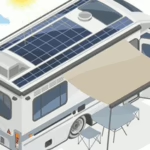
- DJI Power 2000: Silent Strength in Portable Energy,Silent Power Unleashed

- How Does the Fan Noise of the EcoFlow Delta 2 Compare to Other Portable Power Stations

- DJI Power 1000 vs Competitors: Technical Deep Dive & Performance Benchmarking

- How a Portable Power Station can Keep Your Refrigerator Running During Power Outages
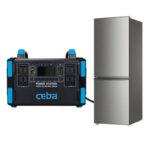
Stay Connected with Us
Stay informed about the latest portable power stations, energy-saving tips, and innovative features by subscribing to our newsletter or following us on social media. Whether you’re powering a TV for camping, RVing, emergencies, or remote work, we provide the insights you need to stay powered up.
